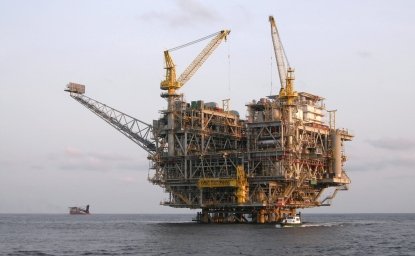Introduction Update
When the second edition of Energy and Security: Strategies for a World in Transition was published in 2013, we highlighted the revolutionary changes in the energy landscape. These changes are still unfolding – which prompted us and many of our authors to decide to update our chapters taking into account the energy world as we see it in 2016. In brief compass, each of our updates considers the relevant changes in terms of the resource, geopolitical and policy environment, and then specifies their impact on the recommendations in each of the chapters.
Our publishers, the Wilson Center Press and the Johns Hopkins University Press, are making these updates available in electronic format. Downloadable from the Wilson Center website, each update is designed to serve as a companion to its corresponding chapter in the 2013 volume.
Since 2013, energy production has redistributed further worldwide; oil prices have declined substantially; geopolitical pressures have increased; and climate change presses on the planet.
The United States has become the world’s largest oil and gas producer, as a result of technological advances in development of ultra-deep water and, even more so, tight oil and shale gas through hydraulic fracturing and horizontal drilling.[1] Reinforced by Congress’ lifting the oil export ban in late 2015,[2] the US can serve as a key stabilizing element in the global marketplace – in effect, as a new “surge” producer.[3] Saudi Arabia has traditionally acted as a swing producer, but in 2014 renounced this unilateral role as the market balancer. As its production has risen to capture market share, its spare capacity has shrunk to as little as 1.5 million barrels per day (mbd).[4] The Kingdom may provide future spare capacity, by new investment or by engineering an OPEC-wide (or wider) production cut, but such prospects are at present unlikely.
Oil prices have declined substantially, and natural gas prices remain at historic lows. Reflecting excess volumes and continued low global economic growth rates, this low price environment has resulted in industry-wide retrenchment and postponement of most major new projects. The dampening effect extends across the energy spectrum, with natural gas displacing coal – cutting CO2 emissions in half – and renewable energy projects proceeding, but often with subsidies to offset competition from lower priced fossil fuels. Expensive oil sands operations have scaled back in Western Canada and elsewhere. In the shale patch, the number of operating rigs has declined by over fifty percent, yet production remains strong as efficiency gains, private capital inflows and hedging strategies kept the strongest US independents afloat – for now. On the other hand, as and when prices rise again with future economic growth, rigs can be quickly reactivated and shale production restored, providing the US and other shale producers with a significant surge capacity.
Geopolitical pressures have also increased. With the lifting of sanctions in the nuclear framework agreement,[5] Iran could export from 300,000 to 500,000 incremental barrels per day in the year after implementation begins and, with a change in framework and further investment, perhaps much more over time. Elsewhere in the Middle East, Iraq and Libya present additional challenges, including the continued production of Kurdish volumes in the absence of a functioning agreement with Baghdad. In Eurasia, Russia’s conflict with Ukraine and the ensuing sanctions raise fresh questions about its natural gas supply arrangements to and around Europe; its economy, which is in recession, feels the full brunt of declining energy prices. However, Russian oil production remains at post-Soviet highs in large part due to ruble devaluation as global oil prices fell. In East Asia, Beijing’s moves in the South and East China Seas pose issues about marine transit of oil and LNG through key global shipping lanes and longer-term resource development. In Africa, continued conflict limits volumes of Nigerian exports, and in Latin America and the Caribbean, Venezuela is terminating supplies on credit and a corruption scandal engulfs Brazil’s state oil company Petrobras. Despite increased US energy self-sufficiency, the global nature of the oil (and increasingly natural gas) markets dictates that disruptions anywhere will impact prices at home as well as abroad.
Climate change continues to press on the planet. The COP-21 (Conference of Parties) climate conference in Paris led, in late 2015, to important undertakings by over 190 countries to adopt national plans which will begin the process of limiting increases in the earth’s average temperature to 2 degrees Celsius or less[6] – with most in the scientific community agreeing that these limits are needed to avoid potentially dangerous shifts in climate and weather, with the attendant risks to land, water and atmosphere.[7] While actions so far are insufficient, Organization for Economic Cooperation and Development (OECD) countries have led in moves to de-carbonize the atmosphere, for example Japan and the US with aggressive efficiency standards and the European Union with its emissions trading mechanism. The Obama Administration has launched a Clean Power Plan to limit carbon emissions from power plants.[8] China, the world’s largest carbon emitter, has undertaken to limit its future emissions; India, the next largest, needs to adopt similar commitments.
In the US, there has been a significant policy response to these changes, but more will be needed to meet the scope of the challenge ahead of us. In order for the US to maximize its role as the potential “surge” producer in the global marketplace, it will be necessary to continue the process of modernizing our oil and gas export policies, as we called for in 2013.
With regards to natural gas, the US exports to all Free Trade Agreement (FTA) partners, while limitations are placed on exports to non-FTA nations in the form of a national interest determination. The export status afforded to FTA partners should also be made automatic for other close partners, such as Japan, which strongly support our foreign policy initiatives – and should not have to wait for ratification and implementation of the Trans-Pacific Partnership.
Congress’ move in late 2015 to lift a near-complete forty-year ban on crude oil exports reflects increased US production capacity, and will enhance US influence and potentially help compensate for future global disruptions.[9]
Exacerbated geopolitical risk also calls for additional measures from the US to advance its national security interests, demonstrate global leadership, and provide assurances to allies and partners. In 2015, Energy Secretary Moniz raised the need to upgrade the infrastructure of the Strategic Petroleum Reserve (SPR) to ensure it can provide incremental barrels to the market in the event of a severe disruption. As an example, he noted the need to be able to move SPR oil to US markets on the water, making it possible to reroute more foreign cargoes without shutting in domestic production, stating that “in an emergency, this will effectively increase global oil supplies by roughly the amount of oil we can distribute from the SPR.”[10] In addition, the Secretary suggested modernizing rather than limiting the use of the reserve to retroactively redress severe economic impacts that have already been experienced. In tandem with the IEA’s coordinated emergency response mechanism, a more flexible SPR would increase the ability of the US and its partners to deal with unforeseen changes in the supply environment. Beyond IEA requirements that its members maintain minimum stockpiles, China and India are creating stockpiles, and other consumers should be encouraged to do the same.
Energy diplomacy and commercial initiatives also offer additional opportunities to mitigate geopolitical risk. Reverse natural gas flows from the European Union to Ukraine and other Eastern European countries, supported by pipeline inter-connections and increased natural gas exports to the EU, would increase their energy security in the face of Russian pressures. Yet Russia’s attempts to obstruct these flows and build two new Nord Stream lines to replace its defeated South Stream plan call for renewed efforts to ensure the EU’s competition policies are enforced. Over time, a more normal energy relationship with Iran could lead to overcoming regional deficits in natural gas, for example in Kuwait, and potential natural gas swaps with Turkmenistan which has become overly dependent on exports to China.
Beyond national and regional initiatives, the global community has important opportunities to expand its cooperation in energy and climate policy. The COP-21 meetings in Paris brought much more coordination and common action to the latter – but even more effective global action will still be needed. In the former, the possibility of productive dialogue between producers and consumers has also increased, for several reasons. First, energy consumers are increasingly producers – as in the case of the US – and vice versa, as in the case of the Middle East. Second, price volatility has made it ever more perilous not only for the energy and related industries, but for the broader economy which is profoundly impacted by energy prices.
One important issue to address will be whether and how to promote universality in the global energy architecture. At present, that architecture is defined by the International Energy Agency (IEA), whose members account for only half the world’s consumption and where such important consumers as China and India only have observer status, and by the Organization of the Petroleum Exporting Countries (OPEC), whose members account for only 40 percent of the world’s production and where such important producers as the US, Russia and Mexico are not members. As both non-IEA consumption and non-OPEC energy production continue to increase and key OPEC states Iran and Iraq seek to grow market share while enduring intra-OPEC infighting that led the group to practically abandon its official collective production quota in December 2015, both organizations increasingly risk obsolescence. The International Energy Forum (IEF) is more broadly based but more limited in scope, focusing primarily on data and transparency.
Beyond price volatility, many other issues commend themselves to global dialogue. In our book, we call for a “Global Energy Security System” (GESS) which promotes globally the unconventional energy revolution, a competitive gas market, environmental protection supporting sustainability and climate efforts, emergency response measures, ending energy poverty, and protecting sea lanes. Some progress has been made in each of these areas, but even more will be needed in the months and years ahead.
Geological opportunities for shale development vary from region to region – but so does the level of necessary public understanding and political support, which in turn depends on increased confidence in the regulatory and safety measures put in place. Natural gas competitiveness is high in some regions, North America for example, and relatively low in others from Europe to East Asia. Greater cooperation is possible in emergency response, as noted above.
The world still faces the reality that over 1.2 billion people lack access to electricity, and the problems of energy poverty are deeply intertwined with the challenges of development, transparency and good governance. Last but not least, sea lanes will need additional protection as global energy traffic increases, and as piracy and other threats increase simultaneously.
In both editions of our book, we have called for more focused and streamlined US government leadership in energy policy. Too much “stove-piping” and limited time horizons still prevail among the numerous agencies with responsibilities in this space, and no less than five White House offices are concerned with different policy aspects. The Quadrennial Energy Review engaging these various units, led by the Department of Energy under the aegis of the White House’s Office of Science and Technology Policy, is a welcome step in a more orderly and longer term direction.[11] We believe that additional White House leadership would make a significant, positive difference – and urge again the creation of an Energy Security Council chaired by an Energy Security Advisor to the President.
These and other issues will be addressed more fully in the chapter updates that follow. Building on these updates, our conclusion’s update will summarize the global and the regional contours of the energy security challenge in light of the changes in the energy and policy environment, and provide a net assessment of the progress made and still pending toward achieving a global energy security system.
Jan Kalicki is Public Policy Fellow and Energy Lead at the Woodrow Wilson Center and is also chairman of Eurasia Foundation. He served previously as counselor for international strategy at Chevron, and before that as Counselor to the U.S. Department of Commerce and White House NIS Ombudsman in the Clinton Administration.
David Goldwyn is President of Goldwyn Global Strategies, LLC. He is the chairman of the Atlantic Council’s Energy Advisory Group, and a member of the National Petroleum Council. He has served as Secretary of State Clinton’s special envoy and coordinator for international energy affairs, national security deputy to the U.S. ambassador to the United Nations, and chief of staff to the under secretary of state for political affairs.
[1] In crude oil and other liquids, US production has reached 9.5 million barrels per day (mbd) – increasing by 5.4 million barrels per day (mbd) from 2008 to 2014, the largest portion of the 6.4 mbd global growth during that time period. In natural gas, US production has grown by 7.7 trillion cubic feet (tcf) to 25.7 tcf from 2005 to 2014, with the Energy Information Administration projecting that the US will be a net exporter by 2017. US Energy Information Administration, Annual Energy Outlook 2015.
[2] As part of the 2015 omnibus spending bill, Congress lifted a near complete 40 year ban on crude oil exports and also extended wind production and solar investment tax credits by five years. The White House opposed the former and supported the latter move, with the two becoming part of a bipartisan package going forward.
[3] “Unlike Saudi Arabia, and to a lesser extent the United Arab Emirates (UAE) and Kuwait, the United States is not a market balancer because it does not have spare oil production capacity in the ground and in surface facilities that would allow it to increase or decrease production at will. But the shale oil revolution has provided the United States an ability to surge its output because the techniques and supporting equipment and infrastructure used to increase shale oil production can be applied quickly and flows from new wells can be brought on line rapidly. This ability to surge production provides additional flexibility to the US and global markets.” For more information, see: “Empowering America: How Energy Abundance Can Strengthen US Global Leadership,” Atlantic Council Global Energy Center, July 2015, http://www.atlanticcouncil.org/images/publications/Task_Force_Report_PDF.pdf, p. 16.
[4] US Energy Information Administration, Short-Term Energy Outlook, September 9, 2015.
[5] Joint Comprehensive Plan of Action, signed by Iran and the P5+1 (China, France, Russia, United Kingdom and United States plus Germany) in Vienna, Austria on July 14, 2015.
[6] See http://www.cop21.gouv.fr/en.
[7] Climate Change 2007: The Physical Science Basis, in Contribution of Working Group I to the Fourth Assessment Report of the Intergovernmental Panel on Climate Change (Cambridge: Cambridge University Press, 2007).
[8] See http://www2.epa.gov/cleanpowerplan (2015).
[9] Department of Energy approvals continue for natural gas exports to non-FTA destinations such as Japan, and in 2015 the Department of Commerce approved a 100,000 barrel heavy for light crude oil swap with Mexico. Prior to lifting the oil export ban, Presidential determinations under the Natural Gas Act and the Energy Policy and Conservation Act could find all natural gas and crude oil exports to be in the national interest – and could be modified if market or policy conditions change in the future.
[10] Remarks to the US Energy Information Administration Annual Conference, June 15, 2015.
[11] See http://energy.gov/sites/prod/files/2015/07/f24/QER%20Full%20Report_TS%26D%20April%202015_0.pdf (2015).
Authors

Former Counselor for International Strategy, Chevron; Chairman, Eurasia Foundation

Explore More
Browse Insights & Analysis
Energy and Security: Strategies for a World in Transition

La esencia de la infraestructura global: perspectivas del líder de la industria Matt Harris

